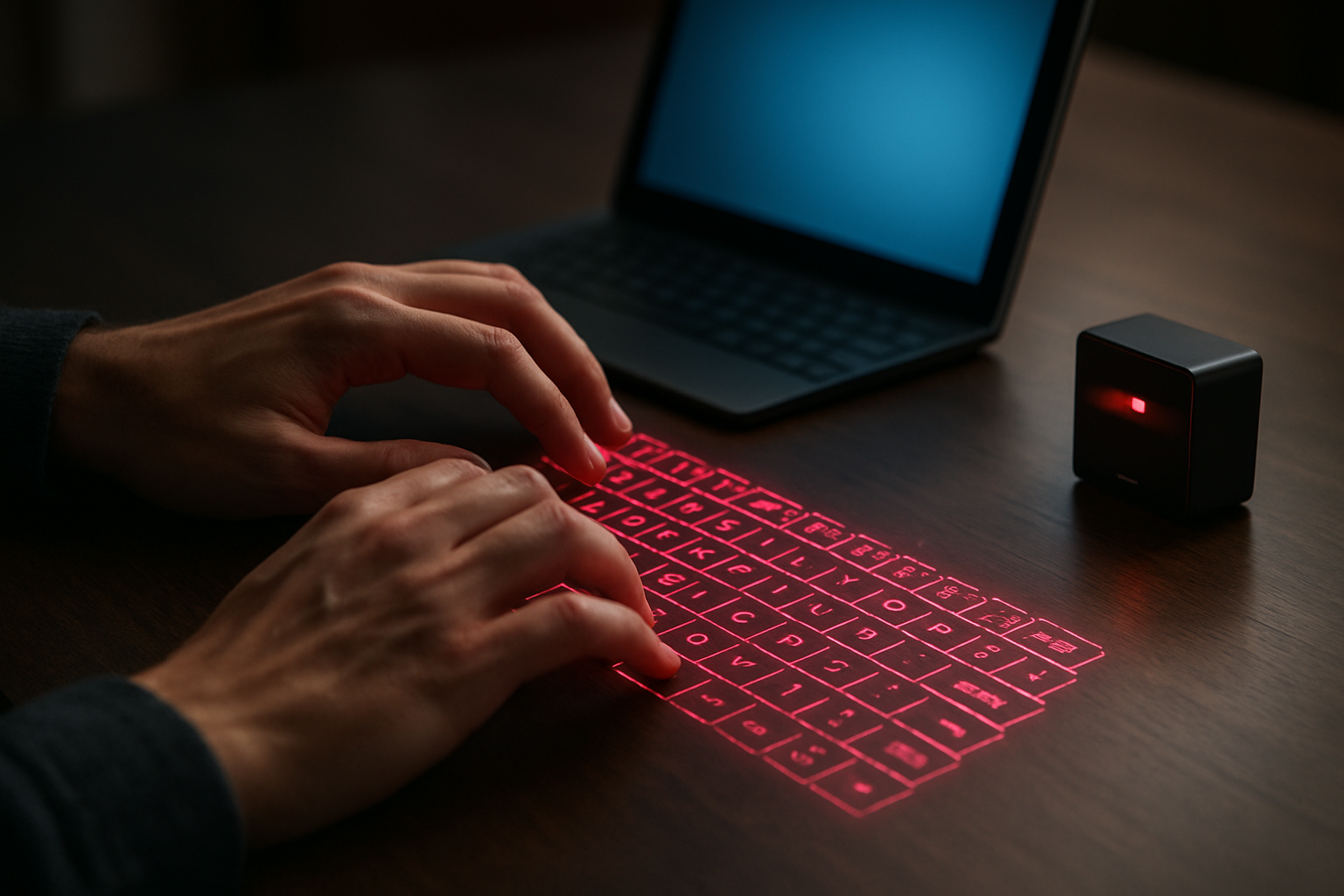Holographic Keyboards: Typing in Thin Air
In an era where technology constantly pushes boundaries, holographic keyboards are emerging as a futuristic solution to our typing needs. These ethereal input devices project a virtual keyboard onto any flat surface, allowing users to type without physical keys. As we delve into this cutting-edge technology, we'll explore its potential to revolutionize how we interact with our devices and the challenges it faces in becoming mainstream.

A Brief History of Virtual Input
The concept of virtual keyboards isn’t entirely new. Early attempts date back to the late 1990s, with companies like Canesta and VKB pioneering projection-based input devices. However, these initial offerings were bulky, expensive, and often unreliable. It wasn’t until the mid-2010s that advancements in miniaturization and sensing technology made holographic keyboards a more viable prospect for everyday use.
Current Market Offerings
Today, several companies are vying for dominance in the holographic keyboard space. Celluon’s Epic line of portable projectors offers a glimpse into the potential of this technology, with prices ranging from $100 to $300. Meanwhile, startups like Serafim and Brookstone have introduced their own versions, each with unique features and design elements. While these products are still considered niche, they’re steadily gaining traction among tech enthusiasts and early adopters.
Advantages Over Traditional Keyboards
Holographic keyboards offer several potential advantages over their physical counterparts. First and foremost is portability – these devices can be incredibly compact, often no larger than a smartphone. This makes them ideal for travelers or anyone working in tight spaces. Additionally, the lack of physical keys means there’s no wear and tear, potentially increasing the lifespan of the device. Some models even allow users to customize the keyboard layout or switch between different languages with ease.
Challenges and Limitations
Despite their futuristic appeal, holographic keyboards face several hurdles in achieving widespread adoption. One of the most significant challenges is the lack of tactile feedback. Without the physical sensation of pressing keys, many users find it difficult to type accurately or maintain their usual typing speed. This issue is compounded by the need for a flat, reflective surface to project the keyboard onto – not always readily available in every environment.
Improving the User Experience
To address these limitations, developers are exploring various solutions. Some companies are experimenting with haptic feedback systems that use ultrasonic waves to create the sensation of touching keys in mid-air. Others are working on advanced algorithms to improve typing accuracy and prediction, similar to the autocorrect features found on smartphone keyboards. These innovations aim to bridge the gap between the futuristic concept of holographic keyboards and the practical needs of everyday users.
Integration with Other Technologies
As holographic keyboards continue to evolve, we’re seeing interesting integrations with other emerging technologies. For example, some developers are exploring ways to combine holographic keyboards with augmented reality (AR) headsets, allowing users to see and interact with virtual keyboards in three-dimensional space. This could potentially eliminate the need for a projection surface altogether, opening up new possibilities for mobile computing and productivity.
The Future of Text Input
While holographic keyboards may not replace traditional input methods entirely, they represent an exciting step towards more flexible and adaptable computing interfaces. As the technology improves and becomes more affordable, we may see these devices integrated into a wide range of products, from smartphones and tablets to smart home devices and vehicles. The ability to conjure a full-sized keyboard out of thin air could fundamentally change how we interact with our digital world, blurring the lines between physical and virtual interfaces.
In conclusion, holographic keyboards stand at the intersection of science fiction and practical innovation. While they still face challenges in replicating the comfort and efficiency of physical keyboards, their potential for portability and customization makes them a technology worth watching. As developers continue to refine the user experience and overcome current limitations, we may soon find ourselves typing on air as naturally as we do on keys today.





